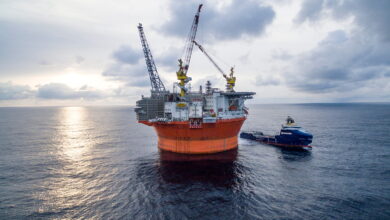Petrobras’ Lage: Defining business target at crux of introducing automation into well construction

When introducing new technology such as automation, it’s critical that not only the physical technologies involved are considered but also the social technologies and the business plan are taken into account as well, Antonio Lage, Petrobras R&D manager of technology for well construction, said at an automation workshop held in Amsterdam on 28 February 2011. The meeting was organized jointly by the IADC Advanced Rig Technology (ART) Committee and the SPE Drilling Systems Automation Technical Section (DSATS).
Physical technologies are the innovations that are usually considered to be “technology,” such as the printing press or the microchip. “Most of the time, we pay much more attention to this than to the rest. We usually do not consider the business or the social technology,” Mr Lage said. That’s a huge mistake.
“Social technology refers to the way we put people together in order to make things happen,” he said. Examples include Ford Motors’ assembly line or Wal-Mart running its business based on new logistics for running large stores. Social technologies and physical technologies must evolve together in order to be successful, Mr Lage said.
And there’s a third aspect to consider as well, and that is the business plan. “This is where you try to put the social technology and the physical technology together in order to make it real, moving from concept to reality. The focus must always be on making a profit,” Mr Lage said. The same is true for introducing automation into the well construction arena – the main driver must be making profit.
The well construction industry is already late to the automation game, and a number of industries are ahead of us in implementing automation technologies. This isn’t necessarily a bad thing, Mr Lage added, because “chances are that almost all the physical technologies you need have already been developed.”
To push automation forward in the well construction arena, he urged the industry to define the amount of automation that must be developed. “Should we be developing a well construction factory… or simple machines that will be capable of drilling parts of the well? What’s our focus?” he asked.
Mr Lage also noted that there are several isolated automation initiatives going on around the world with different targets. Industry needs to create certain standards for automation; otherwise, we’ll be developing automation technologies from scratch everytime, he warned.
Automation initiatives also need to have the final users of automation onboard. “We need to discuss the work flow. We need to think about the human factor. We need to redefine jobs, create new jobs and create specific training for people,” he commented.
Defining the “value added” for automation is also critical, and so far that value has primarily been improved safety – reducing human exposure to risks. “Efficiency has not been a target so far, but it’s important,” Mr Lage said. Improved logistics should be another “value added” as the industry continues to drill wells farther from shore and deeper into the ground.
Looking specifically at Petrobras, Mr Lage noted that his company is seeking “dramatic reductions regarding well construction costs,” and there are many opportunities for introducing automation into the process – as long as automation is developed to improve operational efficiency and reduce costs. He believes that the stakeholders in well construction need to share more information on automation drivers and targets. “We need to reach a minimum level of alignment… We need to define common priorities. As a first step, I think we need to build a vision of sharing profits. I think that’s the most important thing.”




